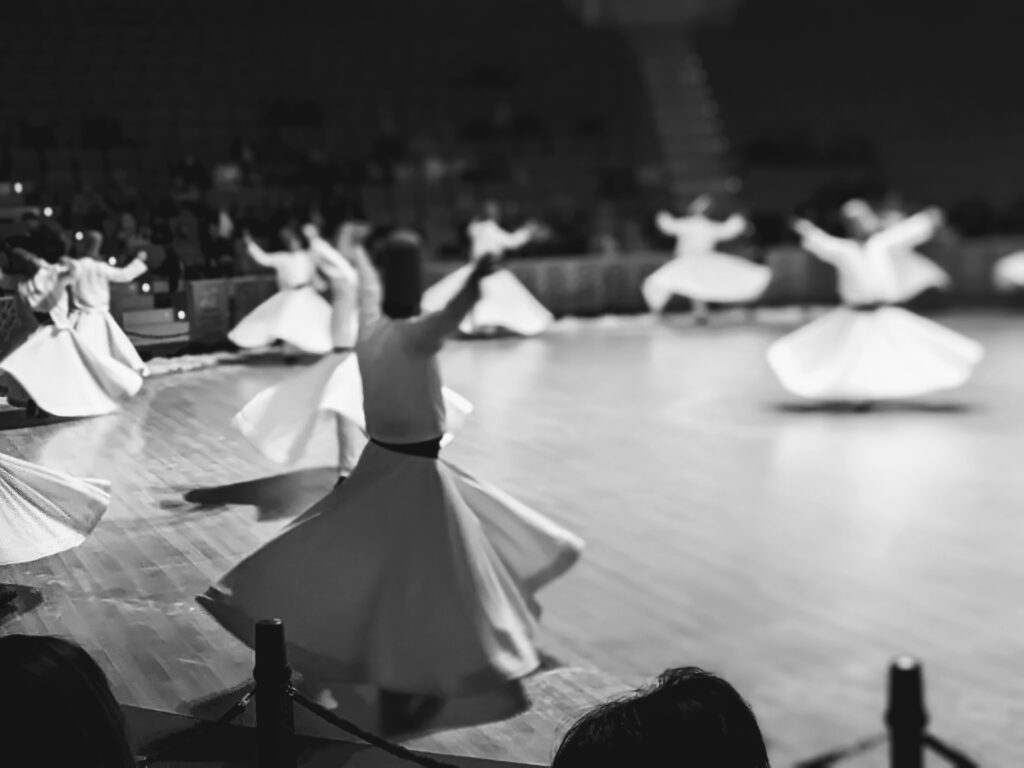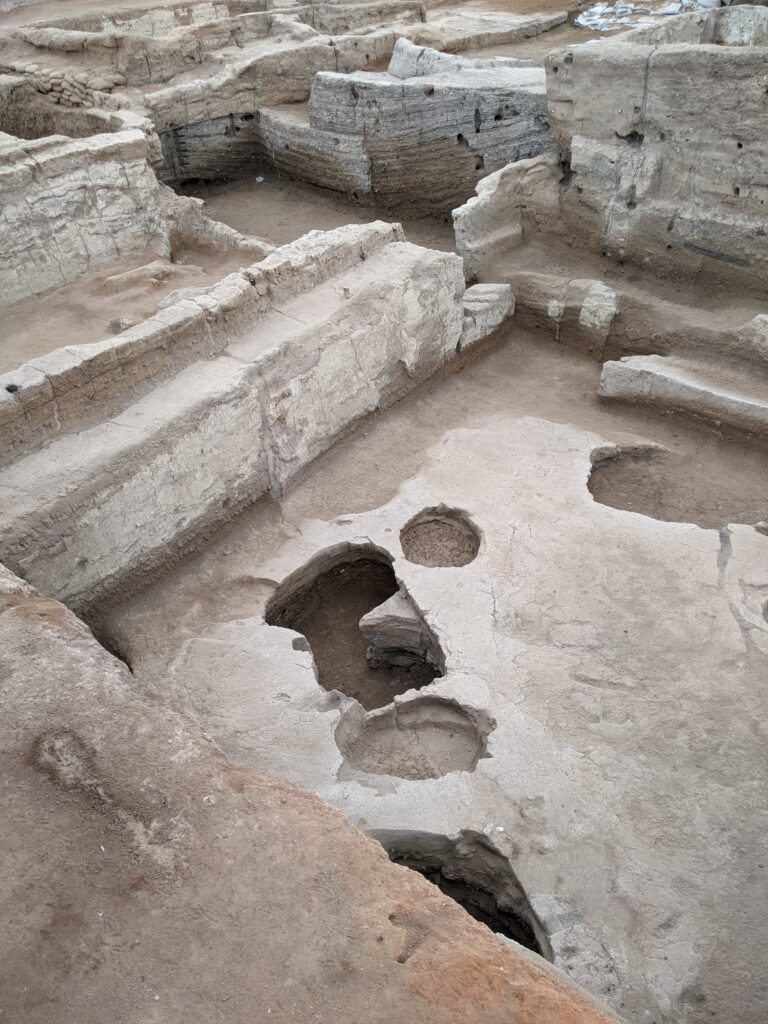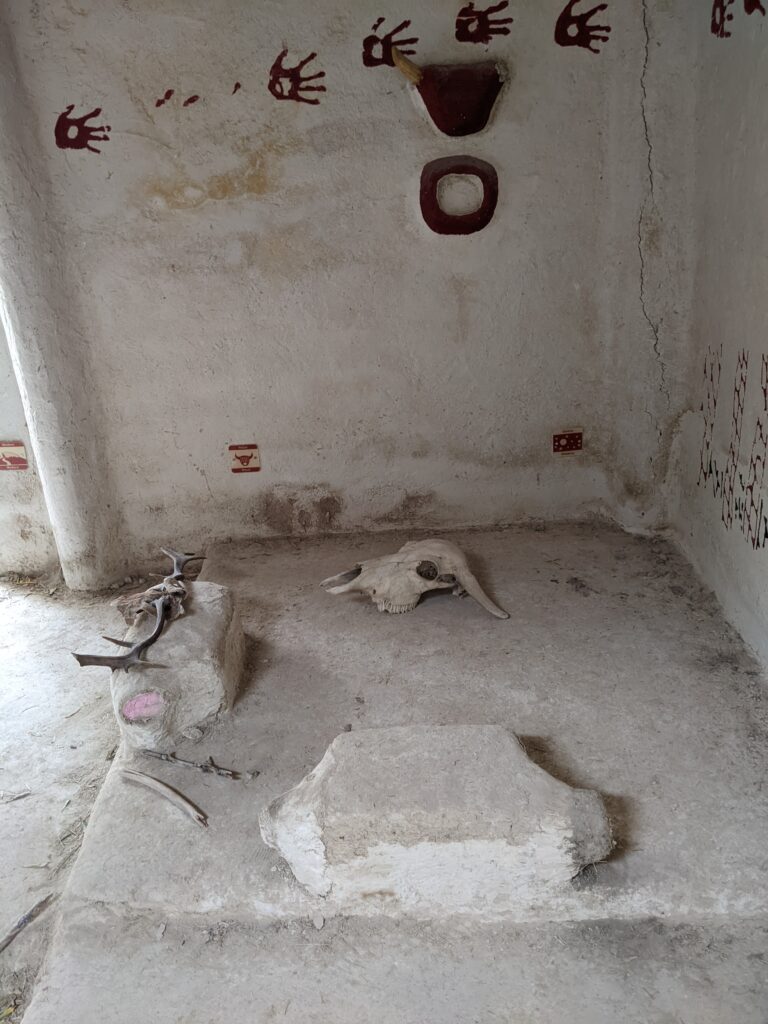
The Persia-born Rumi — who was living in Konya, 700 years ago, the capital of the Turkish Seljuk Empire — told his followers, “There are many roads which lead to God. I have chosen the one of dance and music.” Last Saturday night I watched members of this Suffi sect move into transcendence.
As a teenager in Australia I had watched Ron Fricke’s documentary Baraka. Baraka is a sufi term meaning blessing, essence or breath. His images of the world, from Jerusalem to Kenya, to Bali to France, and to Turkey, had inspired me and stoked my sense of wanderlust. One image I always remember is the upwards turned hand of a whirling dervish, rotating with a sense of calm and praise among the spinning chaos of life. Being at a dervish ceremony myself in the home of Rumi himself reminded me of this impression from many years ago.
But I had another reason to go to the conservative city of Konya in central Turkey: Çatalhöyük.

Çatalhöyük, the first city in the world. It is on a mound about 40 minutes drive out of Konya, on a mound amongst agricultural fields. There is a small museum attached, a little ramshackle. 9000 years ago 8000 or so people lived in the mud brick houses I could see partly exposed at the site. They buried their dead under the house floors to keep them close. They painted animals that they hunted on their walls in two dimensional red ochre paintings. The rooms were simple and entered through holes in the ceiling and sat cheek by jowl to the house next door. Walking around the ruins of this city, exposed by archeologists in recent decades (there is a large covering structure which keeps the rain off the site), I tried to imagine meeting one of these long dead people in the marshy, biodiverse surrounding landscape, and being invited through sign language or perhaps grunting communication back to the city. Walking there and seeing so many people going about their lives. But then the imagination fails. What did they think? What did their language sound like? What was their view of the universe like? Who did they worship? How did they court the opposite sex? What kind of hairstyles did they have?
Today people write science fiction novels and set films in imagined future times, but why do they bother when we have such incredible gaps in human understanding of another lifeworld here on earth in our own archeological record? As I stood their looking at the ruined mudbrick walls and trying to fathom what these people thought and felt a few metres from where I stood, 9000 years ago, I met a blank wall. We can’t know.
Below is a reproduction of what one of the houses looked like inside.

On the other hand, we can guess. One feels as if these were hunter gatherers, who happened to live in built structures. Here I get an inkling that this society and this culture was close to our hunter gatherer heritage, but that they had simultaneously added the first tentative steps towards urban life and agriculture to their repertoire. One important thing about this city was that everyone seems to have been equal – not like seventeenth century Rome with its Palazzo Collona while there were peasants crouching in the ruins, or the high ceilinged domus of Pompeii, while most ancient Romans lived in crowded insula (apartment blocks). Here you didn’t show off by having a mansion while the rest crowded in meagre shanties – rather everyone was on equal footings architecturally.
It was humbling to have stood at the start of the journey from living in the wild natural world, to living in a city, and so recently walked through the apotheosis of the City, the Caput Mundi, Rome. From tentative beginnings to lavish fulfillments.